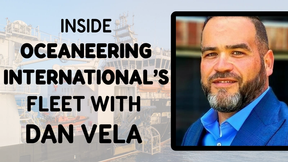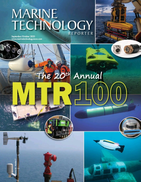
Kraken Robotics
- High-Resolution Subsea Imaging
- LiDAR Surveys
- Subsea Batteries
- Sub-Seabed Imaging
Kraken Robotics Inc. is transforming subsea intelligence through 3D imaging sensors, power solutions, and robotic systems. Our products and services enable clients to overcome the challenges in our oceans – safely, efficiently, and sustainably.
Kraken’s synthetic aperture sonar, sub-bottom imaging, and LiDAR systems offer best-in-class resolution, providing critical insights into ocean safety, infrastructure, and geology. Our revolutionary pressure tolerant batteries deliver high energy density power for UUVs and subsea energy storage.
Kraken Robotics is headquartered in Canada with offices in North America, South America, and Europe, supporting clients in more than 30 countries worldwide.
Locations
Kraken Headquarters
Mount Pearl NL A1N 4P6
Canada
- Phone: +1 (709) 757 5757
Kraken Nova Scotia
Dartmouth NS B2Y 4T5
Canada
- Phone: +1 (709) 757 5757
Kraken Colorado
Longmont CO CO 80501
USA
- Phone: +1 303 892 8900
Kraken Texas
Houston TX TX 77043
USA
- Phone: +1 713 966 6779
Kraken UK
Aberdeen AB32 6FL
UK
- Phone: +44 1224 766180
Kraken Germany
Rostock 18069
Germany
- Phone: +49 381 66098699
- Email: [email protected]
- Phone: +1 (709) 757 5757
- Web: http://www.krakenrobotics.com
- Fax: +1 (709) 757 5858
Products
At Kraken Robotics, our mission is to transform subsea intelligence, empowering our clients to overcome the ocean’s greatest challenges – safely, efficiently, and sustainably. We develop world-class underwater sensing, power solutions, and robotic systems that enable safer, more efficient, and data-driven decision-making for industries operating in complex marine environments. We enable our clients to explore, monitor, and protect the world’s oceans with unmatched clarity and efficiency.
At the heart of our portfolio is Kraken’s Synthetic Aperture Sonar (SAS), a breakthrough in seabed imaging. Unlike traditional systems, SAS combines high-resolution imaging and bathymetric mapping in a single pass, offering greater detail, efficiency, and accuracy. It’s a vital tool for mine countermeasures, infrastructure inspection, and seabed characterization.
KATFISH is our high-speed, actively stabilized SAS towfish, capable of operating at up to 10 knots. It delivers wide-swath, ultra-high-resolution data with unmatched consistency, making it ideal for rapid and precise seabed surveys. Its stabilization ensures optimal performance even in demanding conditions, serving both defence and commercial missions.
Kraken’s SeaPower batteries provide industry-leading energy density for long-duration subsea operations. Built for efficiency and endurance, they power autonomous and remotely operated vehicles with reliability across complex underwater missions.
Our LiDAR solutions enable millimetre-level resolution for detailed inspection and metrology. These systems provide precise dimensional data for pipeline and cable positioning, structural assessments, and infrastructure mapping - critical for reducing risk and ensuring operational accuracy.
The Sub-Bottom Imager delivers real-time 3D imaging of subsurface features, allowing users to visualize seabed layers, detect buried objects such as UXOs, and assess sub-seabed infrastructure. It enhances planning and reduces risk in cable routing, construction, and environmental assessments.
Kraken’s Acoustic Corer offers a non-intrusive, high-resolution 3D acoustic core with a 14-metre diameter and penetration beyond 50 metres. It provides a safer, faster alternative to physical coring for offshore wind development, resource exploration, and geohazard analysis.
Documents
• KATFISH - Kraken’s KATFISH actively stabilized synthetic aperture sonar (SAS) towfish system delivers ultra-high- resolution data of 2 cm x 2 cm. The KATFISH towbody leverages articulated tailfins and an intelligent autopilot to compensate for motion, enabling high-quality data collection and large area coverage rates.
• Kraken SAS - Kraken Synthetic Aperture Sonar (SAS) is a technology evolution, integrating the capability to perform imaging and bathymetric mapping simultaneously, while delivering significantly higher resolution, range, and one of the industry’s best Area Coverage Rates (ACR). From mine countermeasures and port and harbour security to infrastructure integrity surveys and broad area habitat mapping campaigns, Kraken SAS provides higher-grade information that reduces the cost and time required to make critical decisions.
• SeaPower - Kraken’s SeaPower is a subsea lithium ion battery featuring a proprietary polymer matrix for pressure-tolerant encapsulation and an integrated Battery Management System (BMS). This breakthrough in battery encapsulation technology delivers 200% greater energy density and 46% less weight per kWh compared to traditional oil-compensated or pressure-housed subsea batteries. Its exceptional energy-to-volume and weight ratios enable extended, deeper, and more complex underwater missions.
• Sub-Bottom Imager - Kraken’s Sub-Bottom Imaging services allow you to see below the seabed using advanced acoustic technology. Our Sub-Bottom Imager (SBI) 3D data provides a clear understanding of subsea lithography and hazards, decreasing the risk of your offshore and defense operations.
• Acoustic Corer - The Acoustic Corer™ utilizes advanced acoustic technology for sub-seabed interrogation, optimizing offshore installation programs. By bridging the gap between geophysical and geotechnical site investigation methods, it delivers a 3D acoustic core with a 14 m diameter and depths exceeding 50 m, depending on lithology.


 August 2025
August 2025



